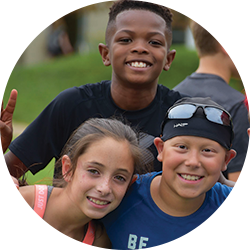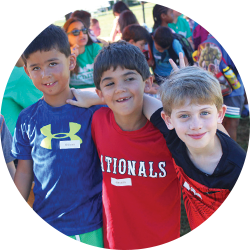17 Ways to Boost Your Child’s Luck:
Executive Functioning Tips that Ensure a Lucky Outcome
 Successful children aren’t lucky; they’re efficient, and their parents know the tips and tricks to help keep them on track. You don’t need to have worn green last month to win the luck of the Irish!
Successful children aren’t lucky; they’re efficient, and their parents know the tips and tricks to help keep them on track. You don’t need to have worn green last month to win the luck of the Irish!
Here are 17 of our best executive functioning tips and strategies to ensure your child’s “luck.”
- Get physical: Children aren’t made to sit still all day, every day, and their bodies benefit from movement breaks. See your child getting frustrated or antsy? Get them up and moving- try 20 jumping jacks or a quick Vinyasa cycle to downward dog to get their brains reactivated and ready to go.
- Be present: Try mindfulness when your kiddo’s brain is wandering. Help them stop and notice where they are, what they’re doing, and what they need to do next to get them back in the present moment.
- Meditation: Try guided meditation (whether it’s an app, an audio meditation, or a read-aloud meditation you do yourself) or just practicing recognizing breathing to re-center.
- Timelines: You know how to plan long-term, but your kids generally don’t. Set up timelines for success. Work with your child to identify the steps they will need to do daily and weekly to achieve monthly and yearly goals.
- Set up routines: Chaos is no one’s friend. Daily and weekly routines help your child’s brain stay unburdened and able to keep track of new activities.
- Organize their home space: Bins, buckets, and more! Label frequent usage items and keep them where they’re easily grabbed.
- NAAG them: No, not nag, NAAG. Try a Night At A Glance chart! For each time, label what task they’ll be doing and have them identify if they’ll need help (and by who) at that time window. It’ll help you organize both their time and yours!
- Memory mnemonics: Just like we’ll always remember PEMDAS, teach your child memory strategies to help them keep track of pertinent information in useful chunks.
- Ready, Set, Achieve: Use a timer! This is one of the best tools that every parent has on their phone. Get your kids ready with language such as “You have ten minutes until it’s time to get in the car. I’m setting the timer now!” and let them keep track of the timer to encourage self-monitoring.
- Repetition, repetition, repetition: Focus on developing habits over the long-term by repeating positive behaviors over and over again. Repetition is your friend!
- Use real life skills to teach tasks: Children are more engaged when tasks are transferable to real life skills. Teach your child to count coins by giving them an allowance at the store to buy a treat and letting them do the math; for your older kids, help them create and stick to a budget.
- Avoid procrastination: The best investment you can make (so long as you use it!) is a planner. Teach them how to use it and stay on top of tasks rather than fall behind.
- Don’t overschedule: Yes, it may look good for college to have a bunch of activities, but the worst thing you can do for young minds is to overburden them with a packed schedule. Leave room for fun and play! (Might we recommend a summer break for play, as well?)
- Create a focus zone: Having a designated space for learning away from distractions is key.
- Silence is golden: Finding your child distractible? Headphones with white noise or “chill” music can help kids focus in.
- Take frequent breaks: With younger kids, try 15 minutes in, five minutes off. For your older children, try 30 on, ten off with approved break activities.
- Build Independence: You can’t and shouldn’t do it all for your kids. Foster independence in your child by modeling these skills, and then letting them practice on their own.
Remember, these skills are transferable not just during the school year but over the summer, too. S@SS works hard to keep your kids engaged, invested, and growing with strategies just like these used daily in our toolbox. See you soon!

Gina Christiano
M.A., Educational Psychology, specialization in School Psychology






 Like you, we have been thoughtfully watching and paying attention to the devastation and
Like you, we have been thoughtfully watching and paying attention to the devastation and 





 professionals enthusiastically strive to help your child reach their developmental goals in the “off” months of summer.
professionals enthusiastically strive to help your child reach their developmental goals in the “off” months of summer.